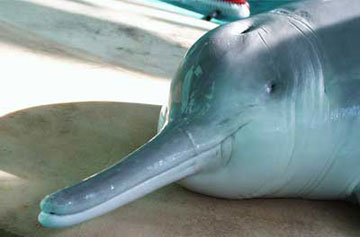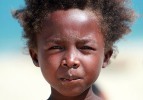In 2002 world leaders committed to reducing the global rate of biodiversity loss within eight years time: 2010. While many have noted that world governments have largely failed on their promises, a new study in Science looks at the situation empirically and agrees that their has been no significant reduction in biodiversity loss and, at the same time, pressures on the world’s species have risen, not fallen.
“Although nations have put in place some significant policies to slow biodiversity declines, these have been woefully inadequate, and the gap between the pressures on biodiversity and the responses is getting ever wider,” said Dr Stuart Butchart the paper’s lead author. Butchart works with the United Nations Environment Program World Conservation Monitoring Centre, as well as BirdLife International.
The paper looked at 31 indicators to measure the state of biodiversity, including risk of extinction, declines or increases in populations, and size of habitat. The majority of these indicators had worsened, not improved, for examples the study found population declines for the world’s vertebrates, habitat-specialist birds, and shorebirds. Globally, the extent of forests, coral reefs, seagrasses, and mangroves all suffered declines as well. While the study found slight improvements in freshwater quality and predator communities in the ocean, it warns that these are likely due to incomplete data.
 The baiji, a dolphin from China’s Yangtze River, is thought to have likely gone extinct in the last decade. Photo by Wang Ding and courtesy of the Institute of Hydrobiology, Chinese Academy of Sciences. |
“Since 1970, we have reduced animal populations by 30 percent, the area of mangroves and sea grasses by 20 percent and the coverage of living corals by 40 percent,” explains the United Nations Environment Program’s Chief Scientist Prof Joseph Alcamo.
In addition, despite pledges, pressures on biodiversity have gone up worldwide. Measurement indicators included total human consumption of the planet’s natural resources, nitrogen pollution, number of overharvested fish, and others. None showed improvement.
“These losses are clearly unsustainable, since biodiversity makes a key contribution to human well-being and sustainable development, as recognised by the UN Millennium Development Goals,” Alcamo says.
Saving biodiversity means preserving essential ecosystem services such as food production, pollination, pest control, water filtering, carbon storage, soil health, and medicine to name a few. As such, biodiversity participates in underpinning the global economy.
“The steep loss of biodiversity is affecting all of us, but mainly those who are already the most vulnerable and dependent on nature for water, food and medicines. World leaders meeting in Japan this October must be more ambitious in halting biodiversity loss—our survival depends on it,” said Matt Foster, Director of Conservation Outcomes at Conservation International.
The study found been some improvements in preserving biodiversity, but these were all local or regional, focusing on a single species or a particular habitat. While such local actions were not capable of stemming overall biodiversity decline, according to the study they show that “with political will and adequate resources, biodiversity loss can be reduced or reversed.”
“While many responses have been in the right direction, the relevant policies have been inadequately targeted, implemented and funded,” explains Ahmed Djoghlaf, Executive Secretary to the Convention on Biological Diversity. “Above all, biodiversity concerns must be integrated across all parts of government and business, and the economic value of biodiversity needs to be accounted for adequately in decision making. Only then will we be able to address the problem.”
Related articles
World failing on every environmental issue: an op-ed for Earth Day

(04/22/2010) The biodiversity crisis, the climate crisis, the deforestation crisis: we are living in an age when environmental issues have moved from regional problems to global ones. A generation or two before ours and one might speak of saving the beauty of Northern California; conserving a single species—say the white rhino—from extinction; or preserving an ecological region like the Amazon. That was a different age. Today we speak of preserving world biodiversity, of saving the ‘lungs of the planet’, of mitigating global climate change. No longer are humans over-reaching in just one region, but we are overreaching the whole planet, stretching ecological systems to a breaking point. While we are aware of the issues that threaten the well-being of life on this planet, including our own, how are we progressing on solutions?
Scientists: 60 million USD needed to gauge the global threat to biodiversity
(04/08/2010) One of the greatest barriers to saving the world’s biodiversity is simply a lack of knowledge: to date less than 50,000 species have been surveyed by the IUCN Red List regarding their threat level, while the vast majority of the world’s species are left unanalyzed especially fungi, plants, fish, reptiles, and insects and other invertebrates. To address this problem, some of the world’s top biologists have proposed a 60-million US dollar program they dub the ‘barometer of biodiversity’ to gather a representative sample of all taxons.
(03/09/2010) Extinctions are currently outpacing the capacity for new species to evolve, according to Simon Stuart, chair of the Species Survival Commission for the International Union for the Conservation of Nature (IUCN).














